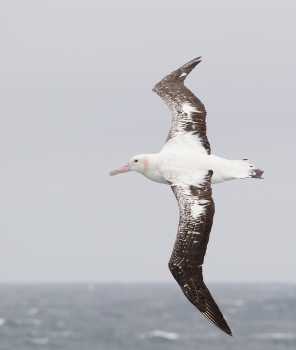Yoshinari Yonehara (Atmosphere and Ocean Research Institute, The University of Tokyo, Japan) and colleagues have published on-line and free access in the Proceedings of the National Academy of Sciences of the United States of America (PNAS) showing that flight paths of Laysan Albatrosses Phoebastria immutabilis, Wandering Albatrosses Diomedea exulans and Streaked Shearwaters Calonectris leucomelas correlate with surface winds.
The paper’s abstract follows:
“Ocean surface winds are an essential factor in understanding the physical interactions between the atmosphere and the ocean. Surface winds measured by satellite scatterometers and buoys cover most of the global ocean; however, there are still spatial and temporal gaps and finer-scale variations of wind that may be overlooked, particularly in coastal areas. Here, we show that flight paths of soaring seabirds can be used to estimate fine-scale (every 5 min, ∼5 km) ocean surface winds. Fine-scale global positioning system (GPS) positional data revealed that soaring seabirds flew tortuously and ground speed fluctuated presumably due to tail winds and head winds. Taking advantage of the ground speed difference in relation to flight direction, we reliably estimated wind speed and direction experienced by the birds. These bird-based wind velocities were significantly correlated with wind velocities estimated by satellite-borne scatterometers. Furthermore, extensive travel distances and flight duration of the seabirds enabled a wide range of high-resolution wind observations, especially in coastal areas. Our study suggests that seabirds provide a platform from which to measure ocean surface winds, potentially complementing conventional wind measurements by covering spatial and temporal measurement gaps.”

Wandering Albatross at sea, photograph by John Chardine
Reference:
Yonehara, Y., Goto, Y., Yoda, K., Watanuki, Y., Young, L.C., Weimerskirch, H., Bost, C.-A. & Sato, K. 2016. Flight paths of seabirds soaring over the ocean surface enable measurement of fine-scale wind speed and direction. Proceedings of the National Academy of Sciences of the United States of America. doi: 10.1073/pnas.1523853113.
John Cooper, ACAP Information Officer, 29 July 2016

 English
English  Français
Français  Español
Español